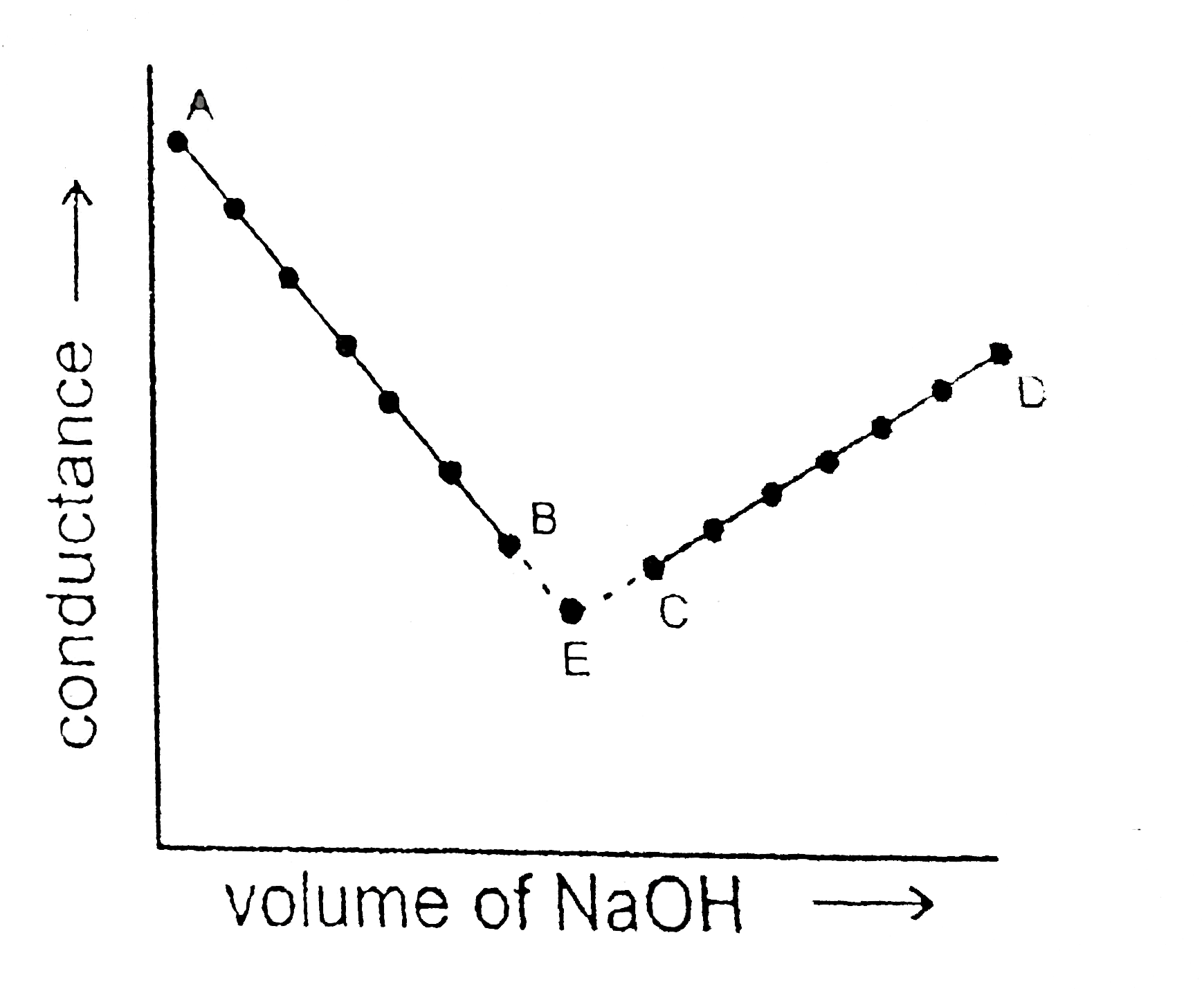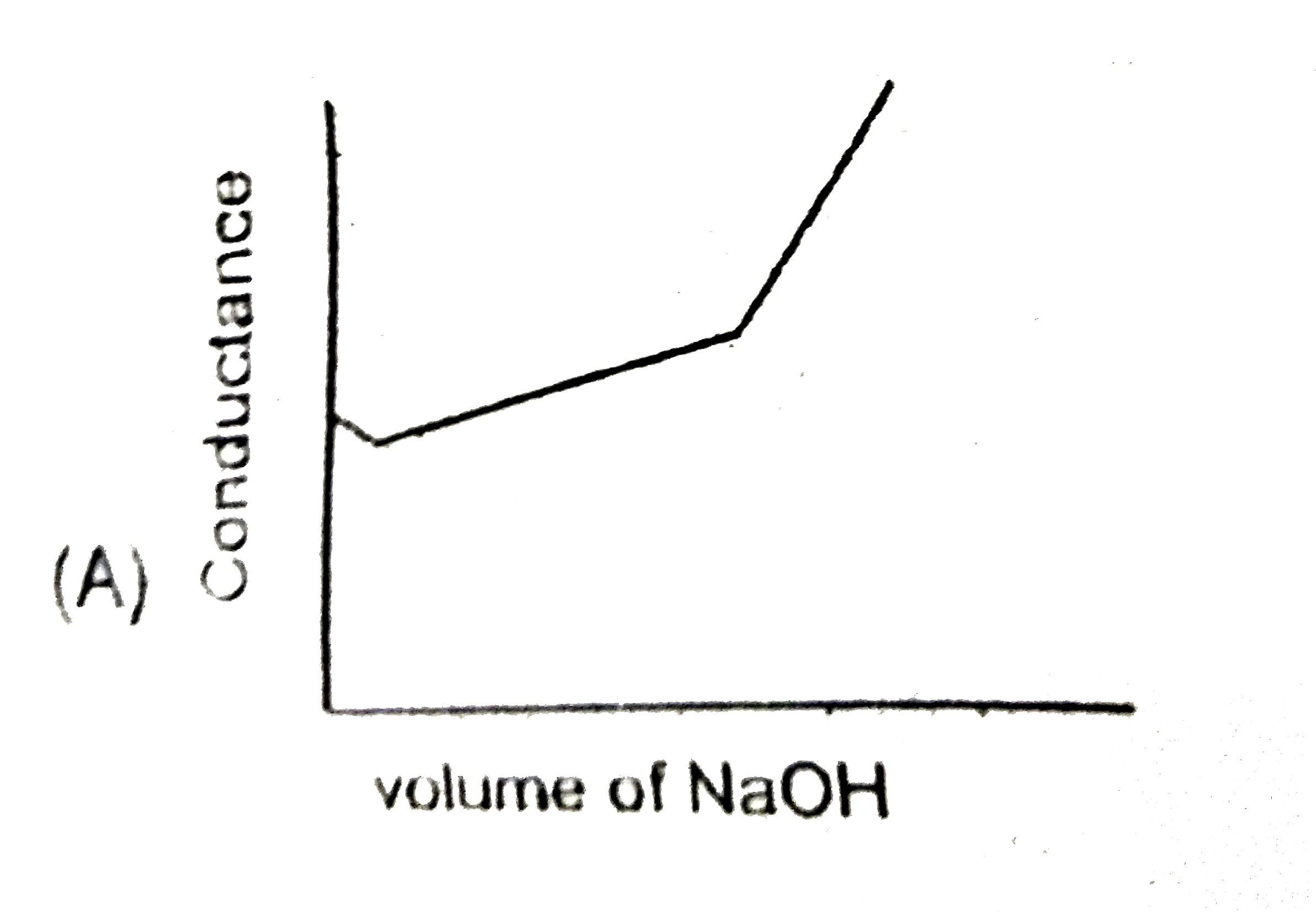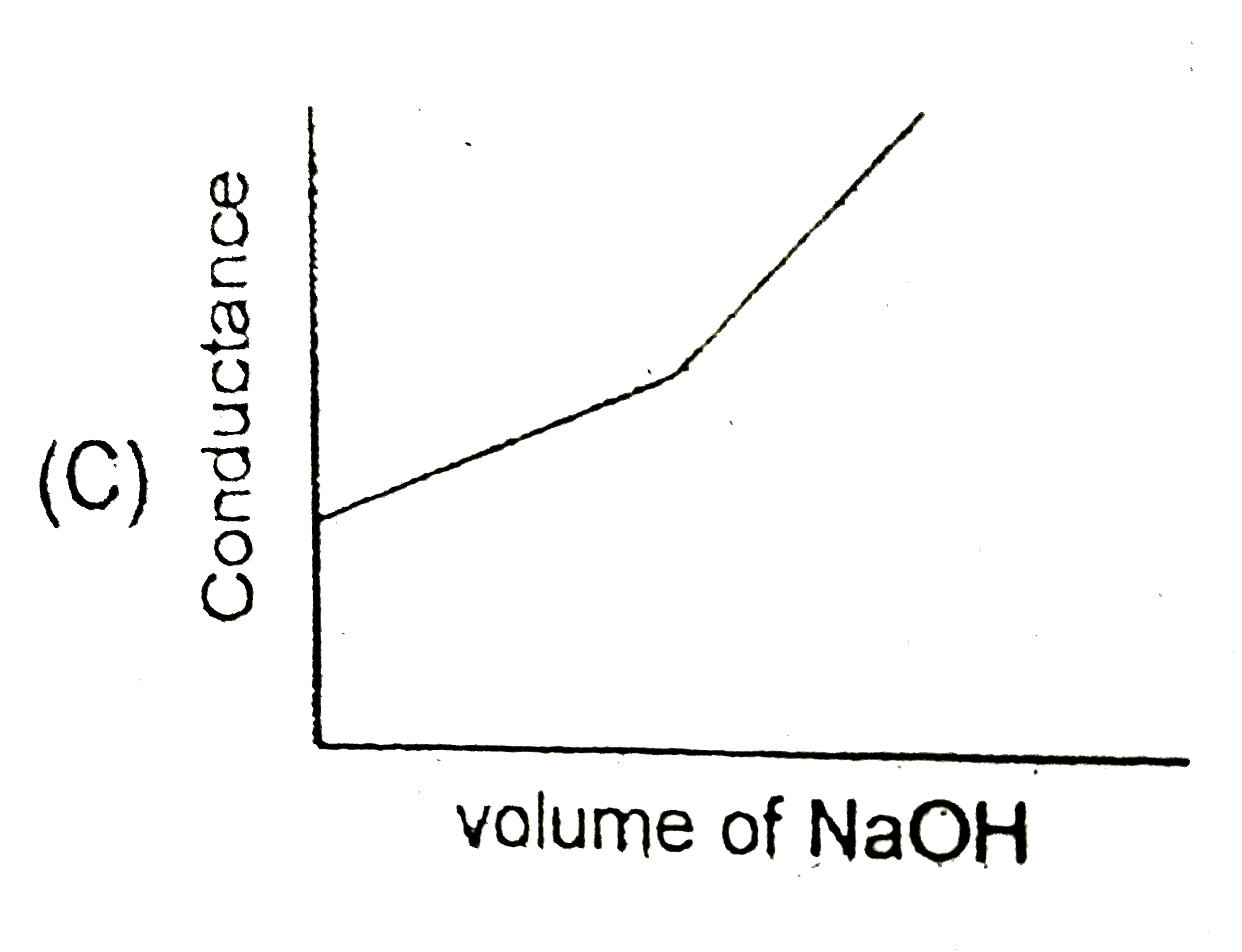
Strong acid versus strong base:
The principle of conductometric titrations is based on the fact that during the titration, one of the ions is replaced by the other and invariable these two ions differ in the ionic conductivity with the result that thhe conductivity of the solution varies during the course of the titration. take, for example, the titration between a strong acid, say HCl, and a string base, say NaOH before NaOH is added, the conductance of HCl solution has a high value due to the presence of highly mobile hydrogen ions. As NaOH is added, H+ ions are replaced by relatively slower moving Na+ ions. consequently the conductance of the solution decreases and this continues right upto the equivalence point where the solution contains only NaCl. Beyond the equivalence point, if more of NaOH is added, then the solution contains a excess of the fast moving OH− ions with the result that its conductance is increased ad it condinues to increase as more and more of NaOH is added. If we plot the conductance value versus the amount of NaOH added, we get a curve of the type shown in Fig. The descending portion AB represents the conductances before the equivalence point (solution contains a mixture of acid HCl and the salt NaCl) and the ascending portion CD represents the conductances after the equivalence point (solution contains the salt NaCl and the excess of NaOH). The point E which represent the minium conductance is due to the solution containing only NaCl with no free acid or alkali and thus represents the equivalence point. this point can, however, be obtained by the extrapolation of the lines AB and DC, and therefore, one is not very particular in locating this point expermentally as it is in the case of ordinary acid-base titrations involving the acid-base indicators.
Weak acid versus strong base:
Let us take specific example of acetic acid being titrated against NaOH. Before the addition of alkali, the solution shows poor conductance due to feeble ionization of acetic acid. Initially the addition of alkali causes not only the replacement of H+ by Na+ but also suppresses the dissociation of acetic acid due to the common ion Ac− and thus the conductance of the solution decreases in the beginning. but very soon the conductance start increasing as addition of NaOH neutralizes the undissociated HAc to Na+Ac− thus causing the replacement of non-conducting HAc with Strong-conducting electrolyte Na+Ac−. the increase in conductance continuous right up to the equivalence point. Beyond this point conductance increases more rapidly with the addition of NaOH due to the highly conducting OH− ions, the graph near the equivalence point is curved due to the hydrolysis of the salt NaAc. The actual equivalence point can, as usual, be obtained by the extrapolation method.
In all these graphs it has been assumed that the volume change due addition of solution from burrette is negnigible, hence volume change of the solution in beaker the conductance of which is measured is almost constant throughout the measurement.
Q. The nature of curve obtained for the titration between weak acid versus strong base as described in the above passage will be:




The correct Answer is:A
Topper's Solved these Questions
- ELECTROCHEMISRYBOOK - RESONANCECHAPTER - ELECTROCHEMISRYEXERCISE - Exercise 3
7 Videos
- ELECTROCHEMISRYBOOK - RESONANCECHAPTER - ELECTROCHEMISRYEXERCISE - Part 2
23 Videos
- ELECTROCHEMISRYBOOK - RESONANCECHAPTER - ELECTROCHEMISRYEXERCISE - Objective Questions
41 Videos
- ELECTRO CHEMISTRYBOOK - RESONANCECHAPTER - ELECTRO CHEMISTRYEXERCISE - PHYSICAL CHEMITRY (ELECTROCHEMISTRY)
53 Videos
- EQUIVALENT CONCEPT & TITRATIONSBOOK - RESONANCECHAPTER - EQUIVALENT CONCEPT & TITRATIONSEXERCISE - Part -IV
22 Videos
Similar Questions
Standard electrode potential data are useful for understanding the suitability of an oxidant in a redox titration. Some half cell reaction and their standard potentials are given below:
MnO−4(aq)+8H+(aq)+5e−→Mn2+(aq)+4H2O(l)E∘=1.51V
Cr2O2−7(aq)+14H+(aq)+6e−→2Cr3+(aq)+7H2O(l),E∘=1.38V
Fe3+(aq)+e−→Fe2+(aq),E∘=0.77V
CI2(g)+2e−→2CI−(aq),E∘=1.40V
Identify the only correct statement regarding quantitative estimation of aqueous Fe(NO3)2
View SolutionWhat will be the emf for the given cell ?
Pt|H2(g,P1)|H+(aq)|H2(g,P2)|Pt
View SolutionGiven : E∘(Cu2+/Cu = 0.337VandE^(@) (Sn^(2+//Sn) = -0.136V. Which of the following statements is correct?
View SolutionA very thin copper plate is electro− plated with gold using gold chloride in HCl. The current was passed for 20min. And the increase in the weight of the plate was found to be 2g.[Au=197]. The current passed was −
View SolutionVolume V1mL of 0.1 M K2Cr2O7 is needed for complete oxidation of 0.678g N2H4 in acidic medium. The volume of 0.3M KMnO4 needed for same oxidation in acidic medium will be :
View SolutionThe following curve shows the change of pH during the course of titration of weak acid HA with a strong base. At which point in the titration curve is the concentration of acid equal to that of its conjugate base.
View SolutionStrong acids are generally used as standard solution in acid-base titrations because:
View SolutionDuring the titration of a weak base with a strong acid, one should use an acid-base indicator that changes colour in the :
View SolutionConductance measurements and be used to detect the end point of acid-base titrations. Which of the following plots correctly represents the end point of the titration of strong acid and a strong base?
View SolutionIn the titration of weak acid against strong base match the pH of the solution at different stage of titration.


View SolutionWhy are strong acids generally used as standard solutions in acid-base titrations ?
View SolutionWhy are strong acids generally used as standard solutions in acid-base titrations ?
View SolutionWhich indicator can be used in the titration of strong acid and strong base
View Solutionप्रबल अम्ल के प्रबल क्षारक के साथ अनुमापन में प्रत्युक्त किया जाने वाला सामान्य सूचक कौन-सा है ?
View Solutionदुर्लब अम्ल तथा प्रबल क्षारक के मध्य अनुमापन के लिए सावर्धिक उपयुक्त सूचक है -
View SolutionThe most appropriate titration curve obtained when a mixture of a strong acid (say HCl) and a weak acid (say CH3COOH) is titrated with a strong base (say NaOH) will be

View Solution
